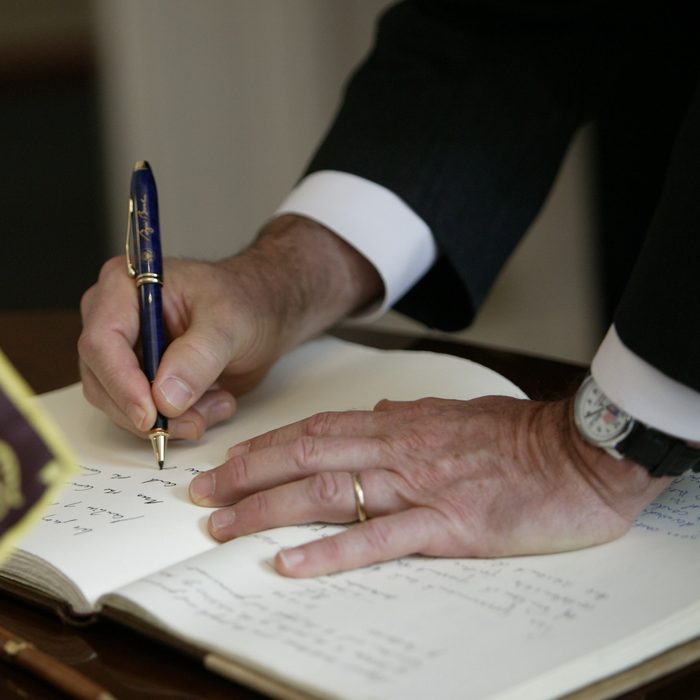
Presidential penmanship
Thanks to our computers, phones, and tablets, we’ve gotten more used to typing and tapping than picking up a pen and writing by hand. Though we may not give much thought to our handwriting when we sign a contract or scribble a to-do list, it can actually provide some interesting insights into our personality and character through handwriting analysis. The same holds true for presidents.
Sure, there are plenty of presidential biographies, but there’s something very intimate about learning about someone through their handwriting. This is something that social worker and graphologist Annette Poizner, author of Clinical Graphology: An Interpretive Manual for Mental Health Practitioners, deals with regularly in her practice. Reader’s Digest asked her to take a look at seven presidential handwriting samples to see what they might reveal about these former leaders. Here’s what we learned.
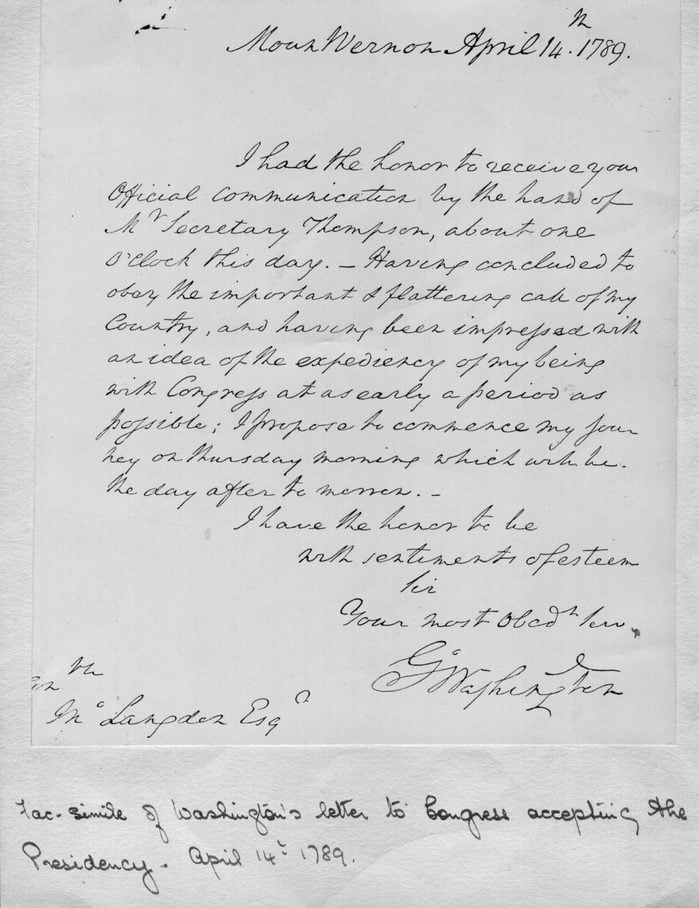
George Washington
A note written by the first president of the United States provides several clues about his personality and character. For starters, Poizner points out his use of “copybook script.” That’s when a person uses the same letterforms they were taught in elementary school with a few minor adjustments. “The writer who favors copybook script is a traditionalist—conservative, responsible, honoring and revering social and governmental institutions, playing by the rules/doing things by the book, dutiful,” she explains.
In addition, Poizner says that the legibility of Washington’s writing indicates that he is honest, direct, and straightforward. Though the tale of a young Washington chopping down his father’s cherry tree and then confessing by saying “I cannot tell a lie” is actually a myth, he was noted as a man of honesty and character later in his career. Here are 11 surprising facts about George Washington you never learned in school.
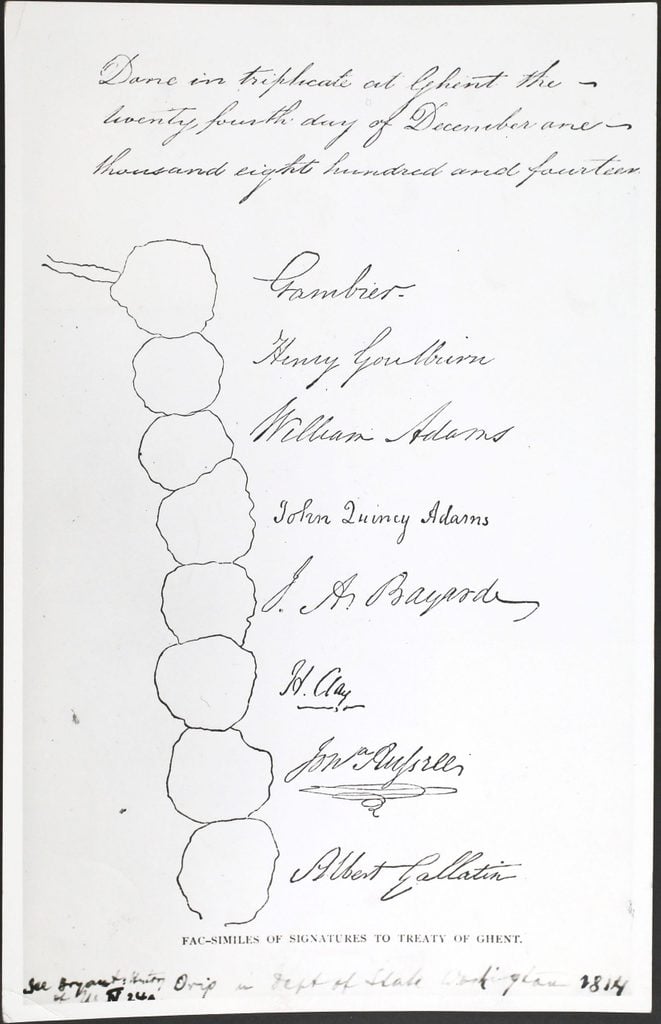
John Quincy Adams
John Quincy Adams has the handwriting of a perfectionist. His letters are carefully articulated, indicating that he is likely a highly detailed-oriented individual, explains Poizner. Even his dots—both for the letter “i” and periods—are perfectly round, meaning that he took the time to slowly and carefully create each one, which Poizner says is very unusual. “This would be a person who had perfectionistic tendencies,” she says. Adams was, in fact, known as a perfectionist—especially when it came to being a father. He once reportedly forbade his son from visiting him until he had improved his grades in school.
The handwriting of America’s sixth president also demonstrates that he was likely punctilious. “He would be attached to his details, the rightness of each because each would be carefully thought out,” Poizner says. “This would be his processing style: grounded in carefully analyzed premises, each considered fully, so he will have strong ownership or attachment to his perspectives. His driving motivation is ‘right action.'” Did you know that Adams was also one of the 13 presidents with the highest IQ scores?
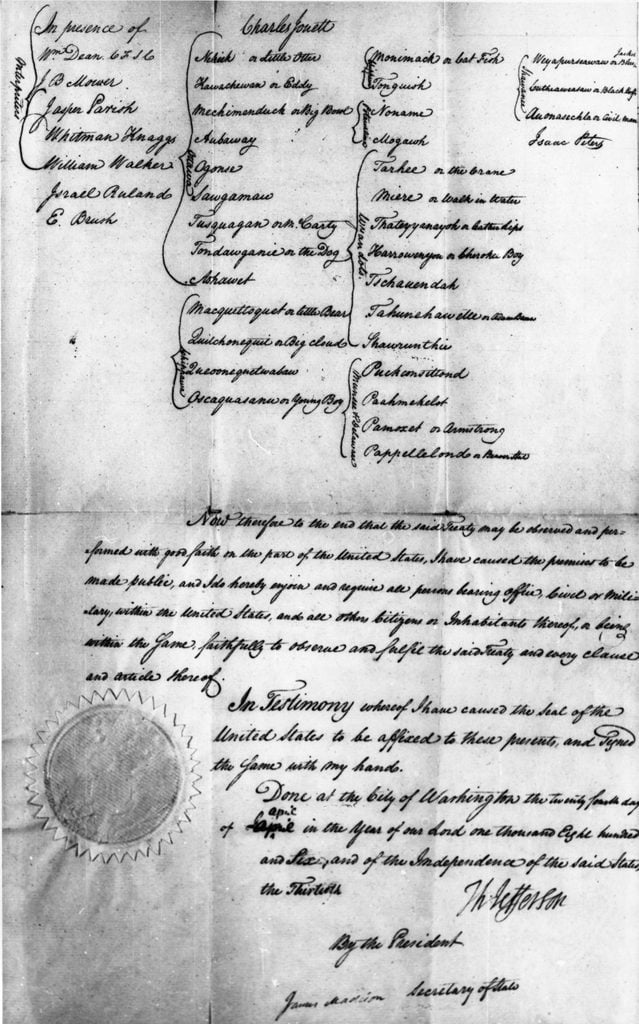
James Madison
James Madison’s handwriting holds several clues about his introversion. First, Poizner points out the small size of his signature. “Small and concentrated [handwriting] expresses introversion and demonstrates the writer with excellent powers of concentration,” she explains. “After all, look how he concentrates on his words and letters.”
We can see another sign of Madison’s personality in the sharp angles of the letters in his signature. “Intelligence plus introversion means that the person applies their intellect in scholarly ways, versus being the life of the party—very heady, sharp analytical thinking style,” Poizner says. “The sharpness, though, shows a lack of social grace. The more expansive [and] rounded the writing, the more personable the writer.”
Madison was, indeed, known for being an introvert, preferring to play chess, read in Greek or Latin, or go hiking or horseback riding alone, though he did occasionally socialize.
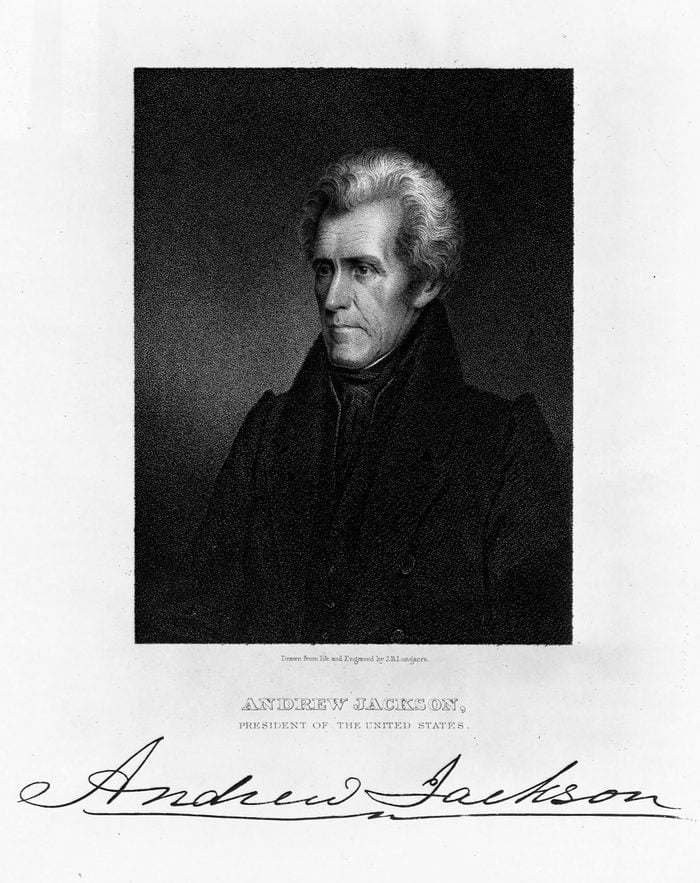
Andrew Jackson
Andrew Jackson had “big signature energy,” underlining both his first and last name. According to Poizner, a boldly written signature where both names are firmly underscored indicates that someone is assertive, emphatic, and a strong-willed “director type.” In Jackson’s case, she says it also demonstrates his need to exhibit his testosterone and alpha energy. “That line speaks volumes and provides context for thinking about this handwriting,” she adds.
On top of that, the sharpness in Jackson’s handwriting expresses his analytical skills and directness. For example, Poizner points out that the fourth letter in “Andrew” is represented as an angle, and there are sharp points at the tops of the capital letters. Given what we know about Jackson, this all checks out. According to his White House biography, when Jackson found out that the Senate had rejected the nomination of Martin Van Buren as Minister to England, he immediately jumped to his feet and exclaimed, “By the Eternal! I’ll smash them!”
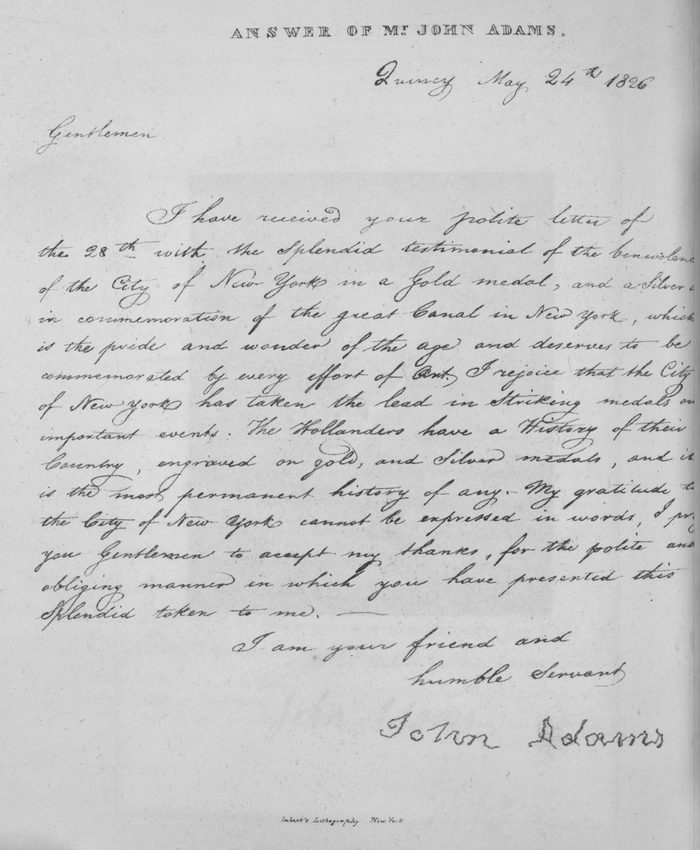
John Adams
When John Adams signed this document, it is likely that he was in poor health. “This writer appears to have a palsy,” Poizner says. “Trembling and difficulties properly holding the writing instrument and executing the movement seem evident, particularly when looking at the last name: The line of the handwriting shakes when forming the last name.” Poizner notes that Adams used very light pressure when writing his first name, and the line actually breaks when he is forming the letter “h.” “The handwriting looks frail, indicating a writer with physical energy that has been debilitated and has compromised his abilities,” she adds. We do know that Adams faced bouts of illness throughout his life, including a six-week period he spent in the Netherlands toward the end of 1781, during which time he was unable to write or conduct business. Here are 22 surprising presidential firsts you never knew about.
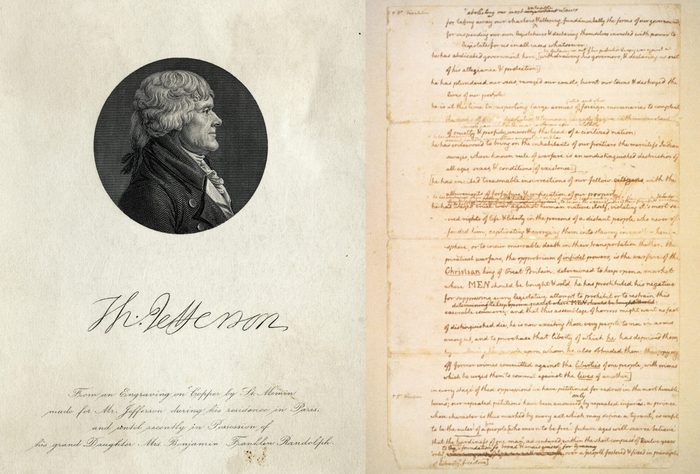
Thomas Jefferson
What’s so unique about Thomas Jefferson’s handwriting is that the text of the Declaration of Independence is written in one style, while the other sample containing only his signature is another completely. “It makes less of an impression when you see the signature separate from the text, but we know that this is how he did it and that he did have this dramatic difference between the two writing styles,” Poizner says. The discrepancies in the style and size of the writing in the two samples could point to a duality, or the idea that he is being pulled in two different directions, she explains. While the handwriting of the text appears to be that of a person who is careful, organized, and intelligent, the signature utilizes the large, unusual letterforms of someone who enjoys being the center of attention and well-regarded.
Though Jefferson was the primary author of the Declaration of Independence, according to his White House biography, he was not skilled at public speaking and was a “silent” member of Congress. As a reluctant candidate for president, Jefferson had to reconcile his desire for privacy with the task of running a newly founded country. By the way, this is the difference between the Declaration of Independence and the U.S. Constitution.
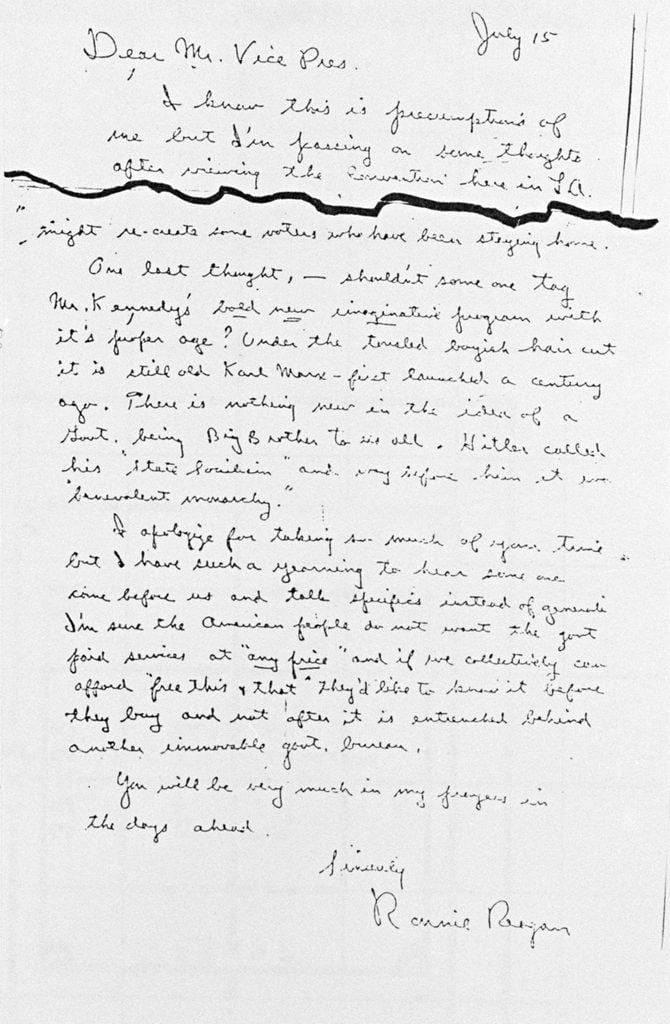
Ronald Reagan
For an executive, Ronald Reagan has surprisingly legible handwriting. “The person who consistently maintains the legibility is showing the priority of clear, direct, and honest communication,” Poizner explains. “The handwriting is down-to-earth if you think about it. It’s fleshed out. He doesn’t omit diacritics or important parts of letters, which is why it’s legible.” She also points out that his handwriting shows that he is a storyteller, with each letter acting as a small detail in a story.
In addition, the capital letters in Reagan’s signature are pronounced: slightly larger and proud looking. Poizner says this is a quality of somebody on display, with a sense of poise and with an awareness of how they come off. But at the same time, Reagan’s signature doesn’t have that overdone quality, which she says is consistent with somebody who was an actor and has an awareness of how they come off in front of others. Given his Hollywood background, this makes sense. Next, check out these 52 astonishing facts you never knew about U.S. presidents.
